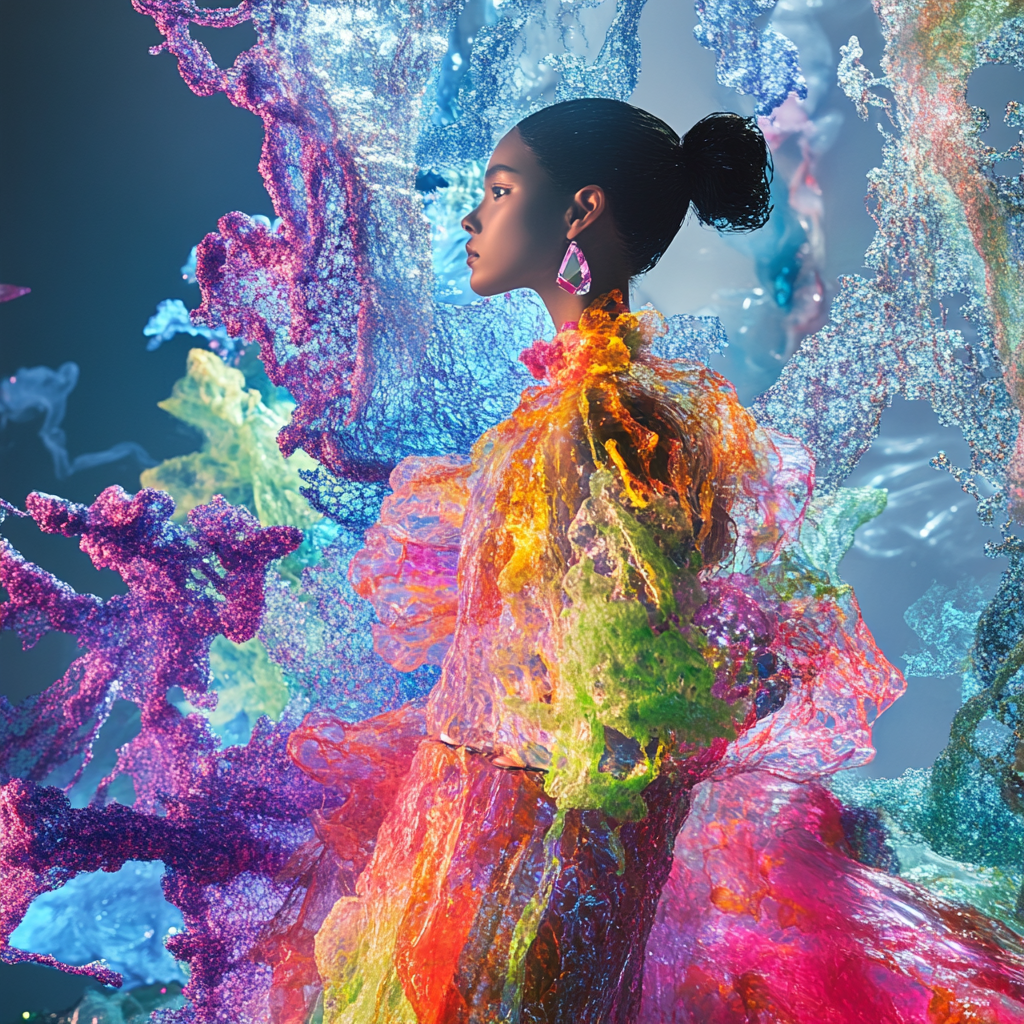
Plants you can wear: Hydrogel material weaves seeds into textiles
Wearable Flora: The Future of Fashion is Growing on You
Imagine strolling through a bustling street, dressed in a garment that not only turns heads but also cultivates life. No longer the stuff of science fiction, thanks to the visionary minds at Cornell University's College of Human Ecology, this dream is blossoming into reality. Researchers have conjured up an astonishing technique that embeds seeds right into our clothes using hydrogel materials. From stylish hairbands to chic wristbands, and even trendy hats and sandals, these wearable marvels are capable of sprouting into living plants—yes, you heard that right! This groundbreaking innovation ushers in a new era of human-plant relationships, transitioning from mere utility to heartwarming symbiosis.
The project, aptly named "LivingLoom," is led by Jingwen Zhu under the astute guidance of Cindy Hsin-Liu Kao. This initiative envisions a harmonious future where humans and plants thrive together. Using a digital Jacquard loom, researchers weave hydrogel yarns—each lovingly integrated with seeds—into imaginative textile structures. Designed for growth, these creations only require a tad bit of nurturing to transform them into delightful sprouts. It’s an invitation to engage with nature in a dynamic and meaningful way.
So, how does this alchemical process work, you ask? It begins with a wet-spinning technique, where a polymer-hydrogel concoction, chock-full of chia seeds, is skillfully extruded into a coagulation bath. This bewitching process gives birth to fibers that are then woven into our beloved fabrics. The beauty of this method? It’s a well-established technique, beloved in the world of hydrogel fiber preparation, known for producing fibers ranging from a dainty few microns to several hundred. That’s some fine-quality fabric if you ask me!
The allure of these hydrogel textiles extends well beyond the realm of aesthetic appeal, beckoning insights into sustainable design and human-plant interactions. By incorporating living organisms into our fabric, we’re not just strutting around in our fashionable threads; we're championing ecological awareness. Imagine how this could revolutionize our perception of the garments we wear, making them instruments for a mutual benefit relationship with the flora that surrounds us.
But the innovation doesn’t end there. This remarkable technology holds implications that reach into the world of wearable sensing and monitoring. While this is a bit detached from the plants-in-clothes theme, it’s worth noting that hydrogel-based sensors are receiving well-deserved attention for their ability to detect environmental changes and stress in plants—real-time. Imagine a biohydrogel sensor keeping tabs on hydrogen peroxide levels in your garden plants, alerting you to any signs of stress before it’s too late—now that’s hands-on gardening at its finest!
As we leap into this brave new world of high-tech fabrics woven with natural elements, one thing is clear: we’re advancing towards a future where our everyday attire nurtures life and inspires a collective conversation about sustainability. By choosing to wear these living threads, we not only assert our unique style but also engage deeply with vital issues surrounding our environment and our connection to the natural world. It’s a win-win, making fashion an extension of our values rather than a hollow garment stripped of meaning.
The integration of seeds into textiles is merely the tip of the iceberg. It's a precursor to an exciting journey awaiting us—one filled with limitless possibilities in textile science, wearable technology, and environmental stewardship. As we forge ahead, it’s thrilling to consider how these living garments could transform not only our fashion choices but our daily lives and our attitudes toward nature.
In conclusion, this concept of plants you can wear transcends simple labels like fashion or technology; it’s about redefining our connection to the world around us. By embracing such groundbreaking innovations, we take one step closer to a future anchored in sustainability and mutualism—a future where our creativity and nature coexist beautifully. It’s about harmony, folks, and the blending of life’s richest elements.
Want to stay up to date with the latest news on neural networks and automation? Subscribe to our Telegram channel: @channel_neirotoken.

